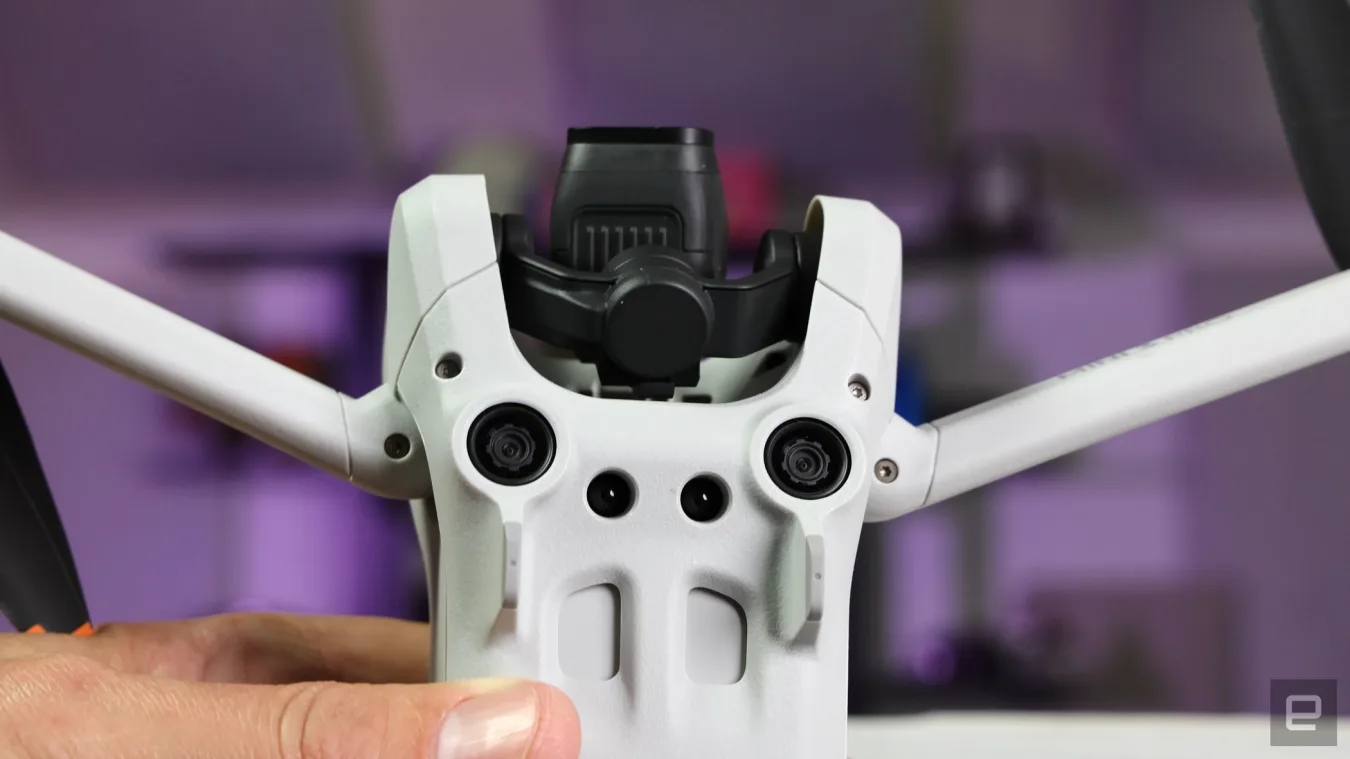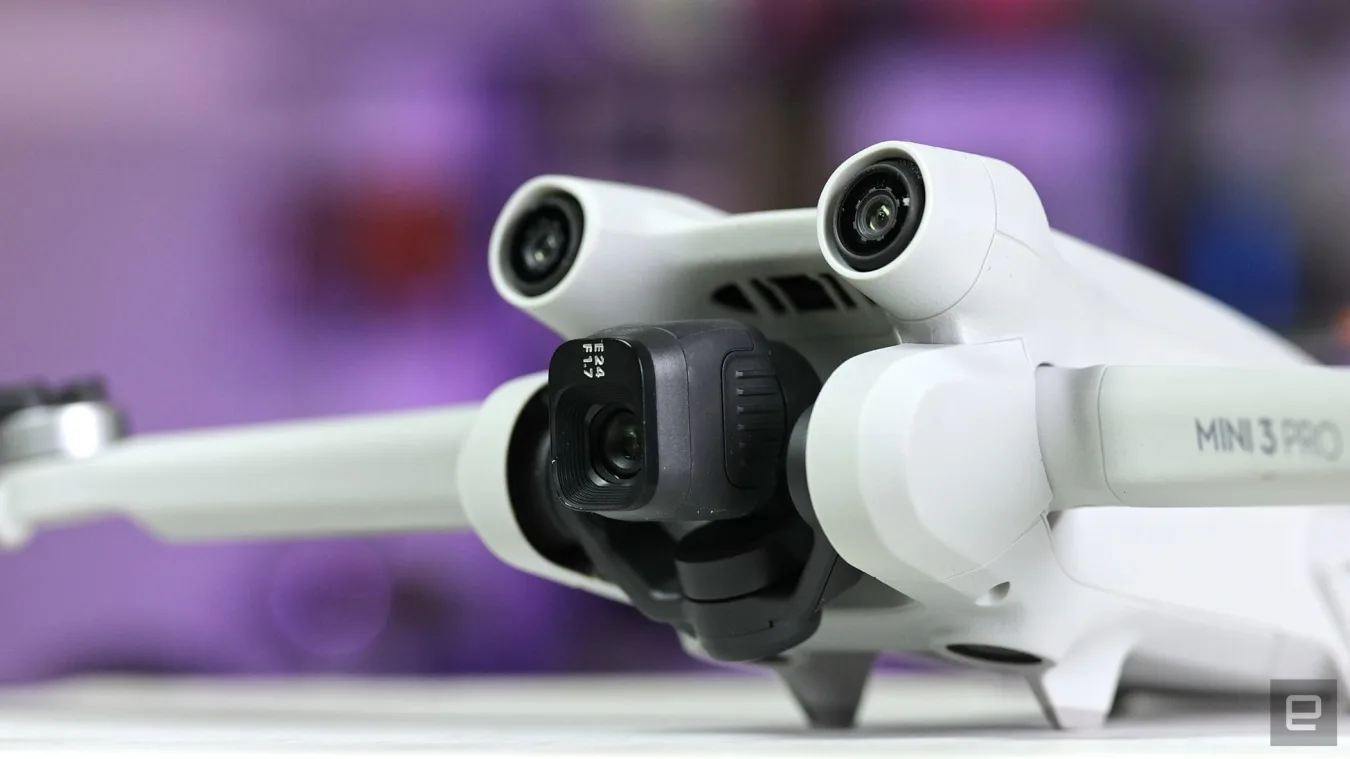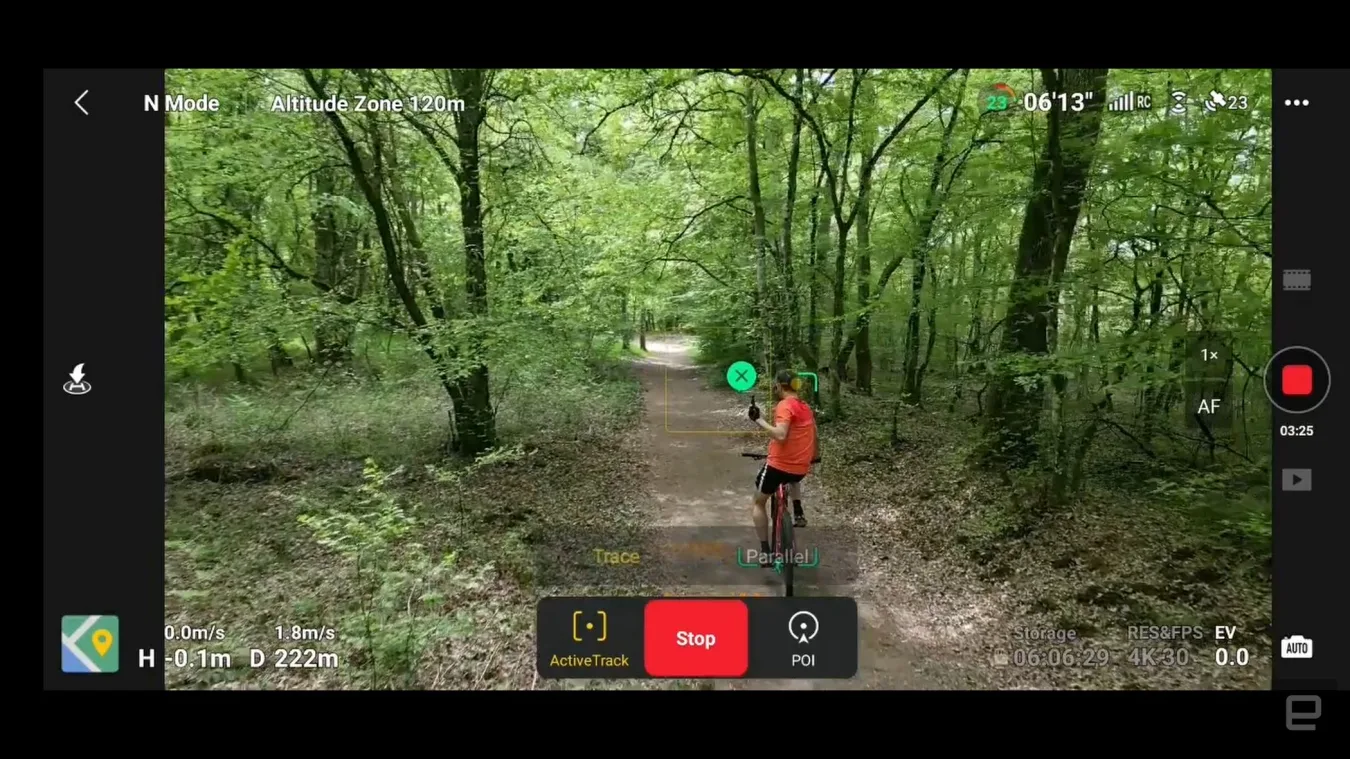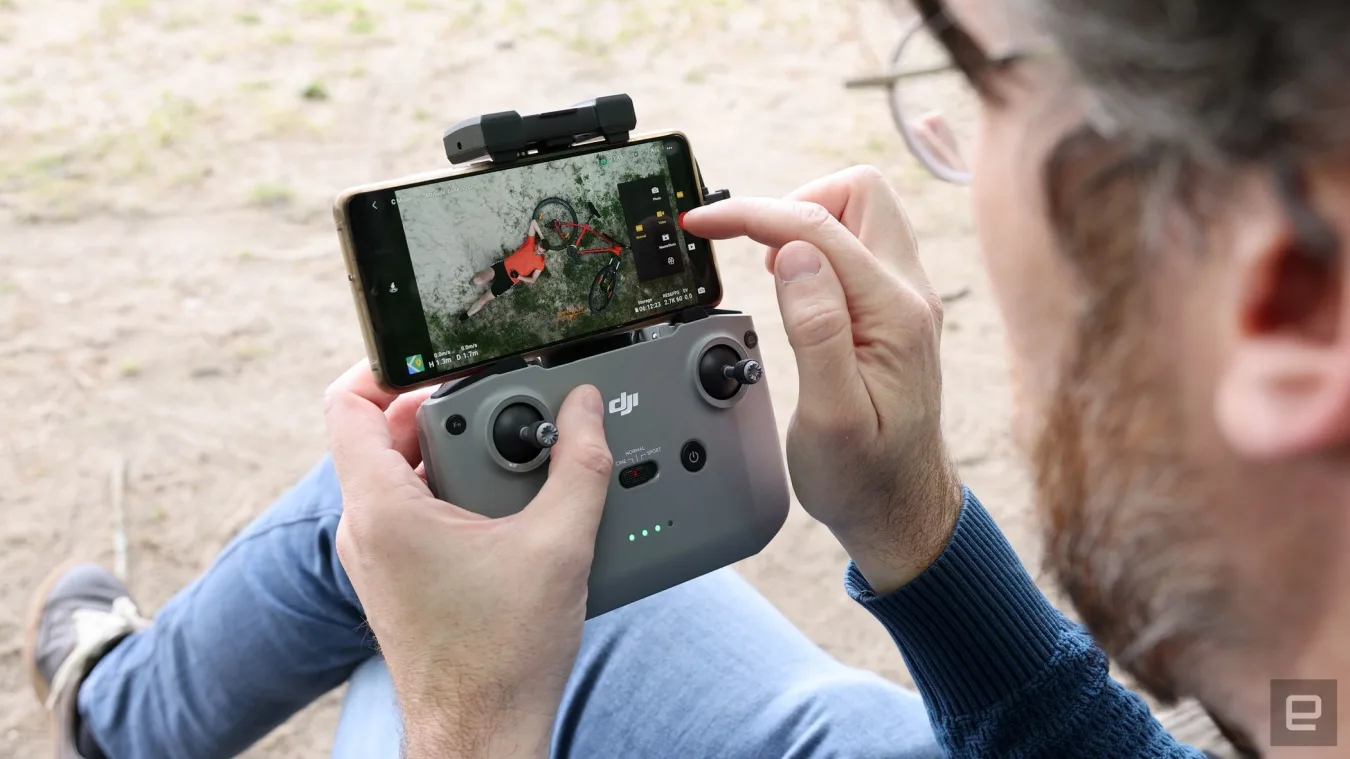Youtube Dji 3 Pro Video Feed Slow
With every release, DJI seems to pack more features into smaller and smaller drones. The Mavic 3 that launched last year was a relatively small drone with a mirrorless camera sensor, pro video quality and more. Now, it has brought a lot of that technology to an even tinier drone, the Mini 3 Pro. It's more capable on paper than the Mavic Air 2, a model more than twice its size.
At 249 grams (8.8 ounces), the Mini 3 Pro is light enough to avoid most drone regulations. But DJI has managed to fit in a sensor larger than most smartphones, and it can detect obstacles all around. Unlike the Mavic Mini 2, it offers 4K at 60 fps and 120 fps slow-mo, plus most of the AI features on the Mavic 3 like ActiveTrack, QuickShots and MasterShots.
Pros
- Great image quality
- ActiveTrack subject tracking
- Powerful obstacle avoidance
- No registration required
- Handy new remote with screen
Cons
- RC video transmission not great
- Not ideal for night shooting
- A bit expensive
Its tiny size and light weight makes it more maneuverable than the Mavic 3, and it's launching with an all-new remote that has a built-in screen. The Mini 3 Pro costs between $679 to $910, though, so it's one of the most expensive lightweight drones out there. To see if it could justify that price, I took it for a spin with help from my drone pilot friend Samuel Dejours.
Features
Gallery: DJI Mini 3 Pro review | 26 Photos
Gallery: DJI Mini 3 Pro review | 26 Photos
The Mini 3 Pro is so small that you can fit it, the RC remote, three batteries and a charger into a tiny bag. That in turn makes it ideal for travel, adventure activities and more. And as it's under 250 grams, you don't have to register it or have a drone pilot's license in the US and other countries.
The standard Intelligent Flight Battery delivers up to 34 minutes of flight time, according to DJI, but you'll need to take that figure with a huge grain of salt. We ran it to exhaustion several times and saw about 30 minutes max, with the return to home (RTH) warning kicking in after about 25 minutes. With a drone so light, those numbers of course depend heavily on wind and other factors.
If that's not enough, DJI offers the optional Intelligent Flight Battery Plus that boosts endurance to 47 minutes max (while keeping the weight unchanged), something that's unprecedented for a drone this size. Again, don't count on achieving that figure very often, but even if you hit 40 minutes, that's still incredible for a lightweight drone. DJI notes that the higher-capacity battery isn't available in the EU and other regions due to local regulations, but it can be sold in the US.
To aid in endurance and keep it more resistant to wind, the Mini 3 Pro has a new aerodynamic body that tilts when flying forward to reduce drag. The redesign also allowed DJI to use bigger propellers to increase propulsion efficiency. And speaking of those, this drone is incredibly quiet. Above 50 meters or so (164 feet), you can't hear it at all, which is great in terms of not disturbing wildlife, etc. However, I could also see it drawing concern from privacy advocates.

Steve Dent/Engadget
While the Mini 2 was completely lacking in obstacle avoidance features, the Mini 3 Pro has DJI's APAS 4.0 system and can detect objects in front, behind and below, all with fairly wide sensing visibility. That system is key for mountain bikers and others who want to film their adventures in forests and other tricky environments.
DJI claims its 1080p OcuSync 3.0 RC video transmission works over 12 km (7.5 miles), but we found this to be a weak point in our tests. If you don't have direct line of sight, it tends to lose the signal far more rapidly than the Mavic 3. For example, we tried multiple passes under a nearby bridge and it either nearly or completely lost the signal, forcing the drone to find its own way out. So if you don't have line of sight to the drone, you won't get anywhere close to 12 km.
The camera gimbal tilts down 90 degrees and up 60, more than double the Mini 2 and Mavic Air 2. The higher upward angle makes it useful to capture dramatic shots of buildings, cliffs and so forth. It has a relatively large 48-megapixel 1/1.3-inch sensor, bigger than the one on the iPhone 13 and only about 40 percent smaller than the DJI Mavic 2 Pro's 1-inch sensor. It offers Dual Native ISO for improved HDR and low-light sensitivity, and a 24mm-equivalent f/1.7 fixed aperture lens.
Just as DJI's Mavic 3 borrowed features from mirrorless cameras, the Mini 3 Pro has taken a page from smartphones. You can shoot high-res 48-megapixel photos or combine four pixels into one for 12-megapixel images with improved night sensitivity, just like on many smartphones. It has a two times digital zoom for 4K and four times for 1080p.
Video specs are impressive for a small drone, too. 4K and 2.7K are supported at up to 60 fps, or you can shoot 1080p at 120 fps. That compares to 4K at 30fps for the Mini 2 and Autel's EVO Nano+, the Mini 3 Pro's principal rival. Videos and photos are saved on microSD cards and there's a small 1.25GB of internal storage.

Steve Dent/Engadget
Another cool trick is true vertical video mode for social media sharing. To maximize quality, the gimbal physically turns the camera sideways for both video and photos. So just as with a smartphone or camera, you get up to 48-megapixel videos and 4K video whether shooting in portrait or landscape modes.
If you'd rather not use a smartphone and the usual DJI RC-N1 remote, for an extra $240 you can get the Mini 3 Pro with the new RC remote that features a built-in screen. It looks and feels cheaper than DJI's $1,100 RC Pro, of course, and the display isn't nearly as bright or crisp. Using it in bright sunlight, we found we had to stay in the shade to get a clear view.
But the screen is large and usually bright enough, and it's extremely convenient compared to the RC-N1. It makes shooting that much more easy and fun when you don't have to take out a smartphone, connect it and so on.
It has power, home and a cinema, normal and sport switch on top. Photos and video are taken with the front triggers and the joysticks can be stowed underneath for travel. Unlike the RC-N1, though, it has separate triggers for photos and video. Hitting either trigger will automatically change the mode between video and photos, so you can avoid diving into the menus..
It has USB-charging and host ports, along with a microSD card slot for screen recording. Overall, it's a nice addition to DJI's remote RC lineup. The company has yet to say whether it will offer the remote separately or for use with other drones.
Performance

Steve Dent/Engadget
One big complaint with the Mavic 3 was that many key features like ActiveTrack weren't available on launch and didn't arrive until months later – too late to review them. Luckily, I was able to test nearly every function on the DJI Mini 3 Pro.
With its small size and potential maneuverability, the first thing we wanted to see was the APAS 4.0 obstacle detection and ActiveTrack following. To test those functions out, we grabbed a mountain bike and headed to a forest, pitting the Mini 3 Pro against a Mavic 3. The aim was to drive through some tree-lined trails and see which drone could keep up.
As we expected, the Mini 3 Pro destroyed the larger drone. It followed Nathanael with greater agility, avoiding nearly all trees. Only once did its sensors miss a small branch, but the minor crash didn't even cause a scratch. That's another benefit of a small drone – they're less likely to be damaged in an accident. The Mavic 3, meanwhile, was much slower and often stopped completely rather than going around obstacles.

Steve Dent/Engadget
There are a few caveats with subject tracking. FocusTrack 4.0 and ActiveTrack only work at 4K 30p, not at 4K 50/60p or 1080 120p. Also, a feature that allows the drone to go around obstacles rather than stopping first isn't yet enabled.
The Mini 3 Pro also acquitted itself well in various QuickShots and MasterShots scenarios. In one instance, while trying to use the Helix mode function, it detected an obstacle (a roof) and stopped. Those functions (Helix, Boomerang, Dronie, Rocket and Circle) all give you some cool shots to share on social media and worked flawlessly on the Mini 3 Pro, though quality was limited to 1080p. We also used the Hyperlapse function to create a nice time lapse video over a city at night.
Image quality
When it comes to image quality, the news is mostly good. By and large, the video was sharp and colors accurate, to the level of what you'd expect on a good smartphone. With a smallish sensor, the Mini 3 Pro is not at the same caliber as a mirrorless camera or the Mavic 3 though, of course.
I did have a few issues. For video, the automatic mode tended to overexpose bright objects, like a boat, so I had to adjust the settings to reduce that. In sunny weather, I found -0.3EV of exposure compensation worked best.
It does offer a fully manual pro mode to control color balance, shutter, ISO and more. However, most users likely will leave it in automatic mode and tweak the exposure compensation settings. You'll have to be careful though, because exposure change transitions in automatic mode (when pointing at the ground then the sky, for example) aren't as smooth as they are on the Mavic 3.
Where most lightweight drones are limited to 4K 30p, the Mini 3 Pro offers 60 fps at 4K for smoother video with fast-moving subjects. The addition of true 120 fps slow mo at 1080p is also a great option for birds in flight, action sports and so on. As mentioned, though, keep in mind that ActiveTrack doesn't work in those modes. That's kind of a shame, as high-frame rate video is just what you need for tracking action.
Source: https://www.engadget.com/dji-mini-3-pro-review-130041928.html
0 Response to "Youtube Dji 3 Pro Video Feed Slow"
Post a Comment